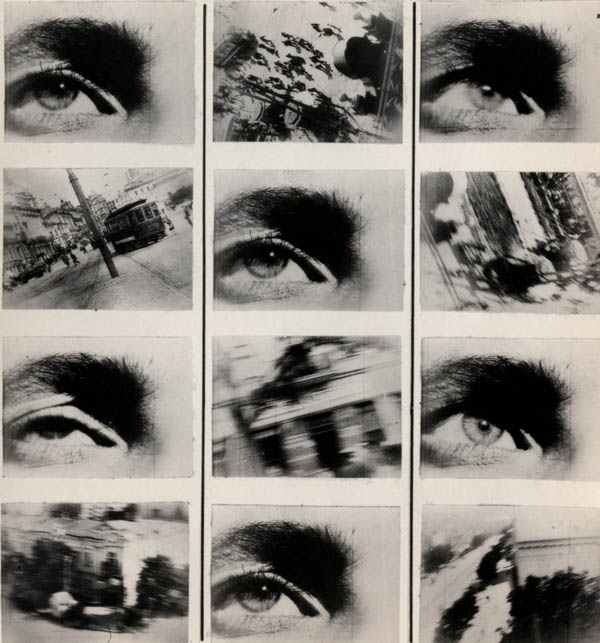
The common error in lack of movement can be seen among amateur and professional photographers alike. However, in the early days of photography this did not come across as dull and lazy, but was a necessity due to long exposure. Now there is no excuse not to crouch and climb; doing so is necessary for a dynamic range and can greatly help with composition. The photo that we all want to avoid is the one that would have been brilliant, had you simply moved this way or that. This is doubly important for the fashion photographer, since an attractive model won’t simply provide them with unique and worthwhile imagery, without great input on the photographer’s end.
"Dziga Vertov's Man With a Movie Camera (1929) is a stunning avant-garde, documentary meta-narrative which celebrates Soviet workers and filmmaking. The film uses radical editing techniques and cinematic pyrotechnics to portray a typical day in Moscow from dawn to dusk." [LINK]
Man with a Movie Camera (1929) is a stunning film, definitely worth watching if you are interested in photography... or it's history. It's quite easy to find the entire film online, with a little effort. This film was quite revolutionary, thanks to cinematographer Dziga Vertov. (1896–1954)
I am kino-eye [film-eye]. I am in constant motion. I draw near, then away from objects, I crawl under, I climb onto them. I move apace with the muzzle of a galloping horse. I plunge full speed into a crowd. I outstrip running soldiers, I fall on my back, I ascend with an airplane, I plunge and soar ...One could take this as excellent (albeit unintentional) advice considering his movie is now one of the staples in the education of film and photography students today.
Vertov himself was quite the patriot; the aforementioned "Kino-Eye" was a communist propaganda group. "Dziga formed a propaganda unit... [that] launched a massive campaign of newsreel coverage. This massive propaganda campaign was an attempt to break down the social barriers of the different Russian ethnic groups by blending propaganda and art."[LINK]
Man with a Movie Camera received bad press during it's release. This is not surprising, since today's revolutionaries and cultural leaders were often caused scorn and confusion in their day. Experimental art was (and still is) not the most respected genre in our contemporary timeline. Although it was subject to some negativity, it was also an undeniable stepping stone for the film medium. In a short amount of time thereafter, film speed had become standardized at 24 frames per second; this was for the accommodation of sound projection. This led to film becoming a big business and therefore being accessible to more people. This surely pleased not only Vertov and his communist friends, but all the world's citizens interested in the growth and evolution of technology.


No comments:
Post a Comment